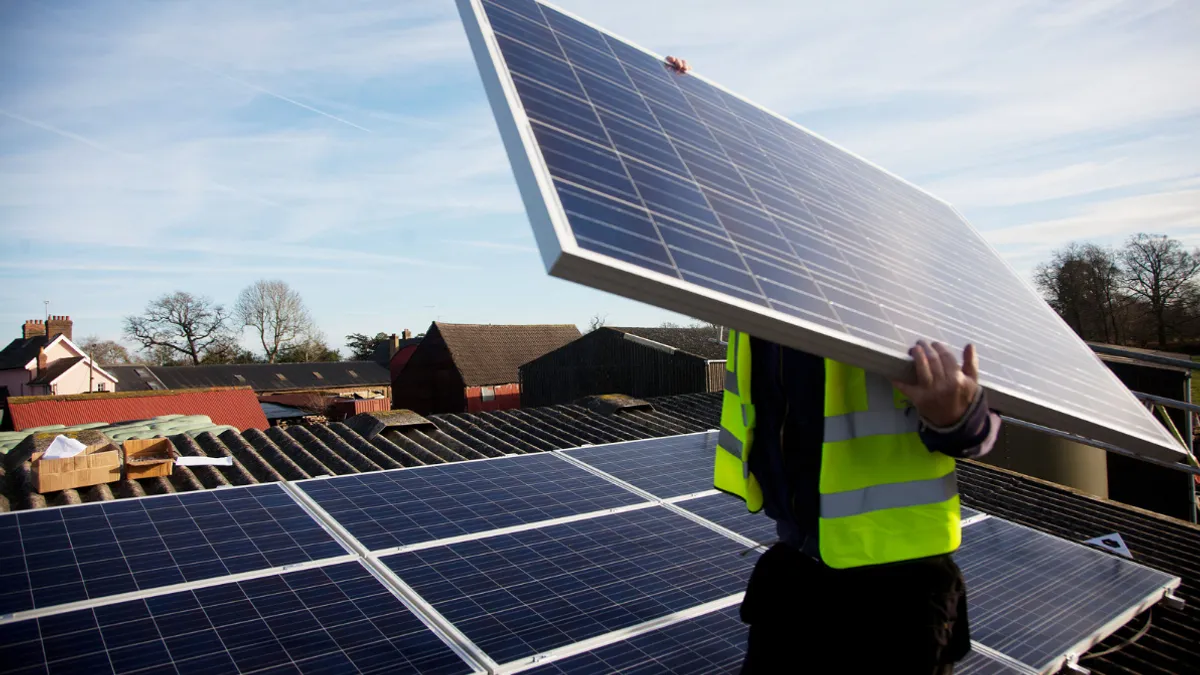Dive Brief:
-
New Jersey is cutting down the subsidies paid to solar developers under a new plan approved Friday by state utility regulators.
-
The program is a "bridge" between the Solar Renewable Energy Certificate (SREC) and "a yet-to-be determined successor incentive program," the New Jersey Board of Public Utilities (BPU) said in a statement announcing its decision. New credits established under the program, Transition Renewable Energy Certificates (TRECs), will be capped at a fixed price over a 15-year contract.
-
A May 2018 executive order signed by New Jersey Gov. Phil Murphy, D, required the BPU to design a "sustainable" alternate program that would lower ratepayer costs. Some developers worry, however, that establishing a price cap under the temporary program will stagnate growth in the state.
Dive Insight:
New Jersey's SREC program was considered a top-tier incentive program by many renewables and clean energy groups. But the state, like many in the Northeast, has some of the highest power bills in the country, and part of Gov. Murphy's clean energy plan called for ensuring the state's energy transition was affordable.
The 2018 law also calls for doubling New Jersey's renewable portfolio standard to 50% renewables by 2030. Under that plan, state regulators are required to make "near-term structural changes to ensure that the program is sustainable over the long term."
The new incentives cannot exceed 9% of the state's total electric power costs from 2019 to 2022, and can't exceed 7% from 2022 to 2024. TRECs will act in the interim to provide credits for projects that were approved under the legacy program but haven't began receiving payments yet.
BPU must have a revised credit program in place either by June 2021 or by the time 5.1% of the state's power comes from solar power. Currently, 4.51% of New Jersey's power is solar, according to the Solar Energy Industries Association.
The regulators' plan would cap how much utilities pay to solar customers through credits.
"This transition program brings us another step closer to a more effective, efficient, and sustainable solar energy market for New Jersey that will … protect ratepayers from needlessly high costs," BPU President Joseph L. Fiordaliso said in a statement. "Ultimately, our aim is to balance ratepayer impacts with ensuring a thriving and stable solar industry."
But solar developers and advocates are concerned that setting a cost cap could slow the state's transition by dissuading developers from building projects in the state.
"Solar developers look for a certain level of incentive or return on their investment when they plan to undertake projects, and when you put a cost cap, you're basically telling some developers that their projects won't be cost effective anymore," Mid-Atlantic Vote Solar Director Pari Kasotia told Utility Dive. "And so that is a big reason for those developers to not pursue certain projects."
Currently, the SREC program allows solar customers to sell their power to utilities — which are required to generate 15% of their power from renewables and 3.2% from solar since 2018. Solar owners receive one SREC per 1 MWh of solar generated, valued consistently above $200 per SREC in 2018.
Under the new plan, regulators are still determining a cap price — debating between a flat 15-year cap of $152 or a $65 price for the first three years, followed by $189 annually for the remaining 12. The Board is planning to open a proceeding in early 2020 to examine this question more closely.
Each solar project under TREC will be valued not by total MWh but by a factor number assigned — non-residential rooftop, carport, grid-connected rooftop and landfill/brownfield projects are prioritized with higher credits under this system.
Meanwhile, legislation introduced Thursday would give the BPU more flexibility to increase the cost paid to customers for Class I renewable energy, including solar. The bill's sponsor, Sen. Bob Smith, D, did not respond to Utility Dive's requests for comment.
A hearing on the bill occurred Monday. BPU is hosting a workshop on the successor program Dec. 17.














